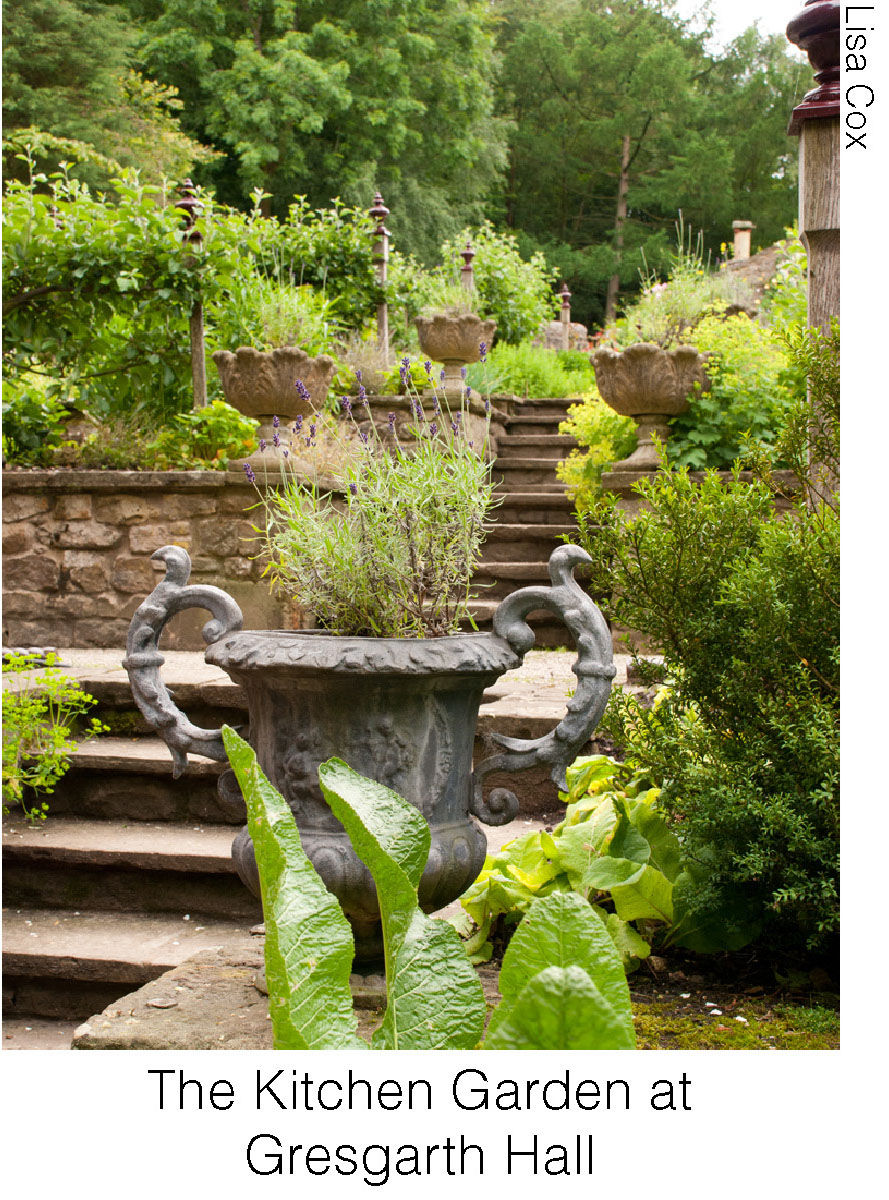
By Carol Buckley.
One of Great Britain’s foremost landscape designers for decades has been the Italian-born Hon. Lady Lennox-Boyd. Born in Rome in 1938, Arabella grew up at her family home, the Palazzo Parisi, in Oliveto. At age fourteen, she went to study in Switzerland and met an English friend with whom she visited England for the first time. She fell in love with the gentle English countryside, and returned as a young divorcée in her mid-twenties with her daughter. It was in fabulous 1960s London, when working for a designer of avant-garde plastic furniture on the Kings Road in Chelsea, that she began to experiment with plants in her small North London garden. Her social life led her to befriend the influential gardener Nancy Lancaster and to be invited to vast garden estates.
Arabella began to design small gardens for acquaintances and in the early 1970s, she studied landscape architecture at Thames Polytechnic (now Greenwich University) in London. According to garden historian Kristina Taylor, “She suddenly discovered a purpose and way to express herself," and with a fellow student, Arabella opened a studio in London. By 1980, she was sole proprietor and eventually had a team of five assistant designers and international commissions. Arabella made a reputation as someone who could combine the formality and classical sense of symmetry and scale of an Italian garden with English romanticism and what the British call plantsmanship (a knowledge of plants and the environment they thrive in). And, as she told the Telegraph’s Isabel Albiston, “Luckily I’m good at getting a feel for people’s personalities." Some of these people have included Sting and Trudie Styler, the sixth Duke of Westminster and his wife Natalia, the King and Queen of Belgium, and the Rothschilds.

In 1974, Arabella married Sir Mark Lennox-Boyd, a Conservative member of parliament with whom she later had a second daughter. In 1978, they purchased Gresgarth Hall, a 150-acre Lancashire estate. Placed in a windblown and damp valley, the site challenged Arabella, but she solved problems with her sense of plants as structure. As garden designer Lisa Cox wrote in her blog, The Room Outside, after visiting Gresgarth Hall, “A series of rooms with yew hedges . . . were planted to provide a shelter belt because wind was a huge problem when they first moved there."
Gresgarth Hall also gave Arabella a larger place to experiment. She loves gardening as much as designing (she weeds alongside her gardeners even when company is visiting) and became a collector of exotic species, such as Himalayan blue poppies (Meconopsis betonicifolia). A trustee of Kew Gardens, she is passionate about planting from seed, and when acquaintances travelled to China to collect, for instance, she asked them to bring back birch, magnolia, and rhododendron seeds.
In addition to working on private gardens, Arabella has had public projects. One was the rooftop London garden for renowned British architect James Stirling’s No. 1 Poultry building, with its charmingly bowered Coq d’Argent open-air restaurant. Another is the garden at Maggie’s Cancer Caring Centre in Dundee, Scotland, where, in 2009, she designed an open area to link Frank Gehry’s cancer-treatment building to the hospital. For both projects, she used more of a minimalist approach—for No. 1 Poultry, she incorporated rectangular box hedges, stone balls, and colored gravel around a fresh green lawn. And for the Centre, she set a 108-foot-diameter labyrinth of stone in lawn as a metaphor for the path of the patient and a place of contemplation. With telling sensitivity, she placed eight-foot grass mounds around the area to reflect the forms of the surrounding hills and to hide approaching ambulances and the heliport.
This minimalism appeared in Arabella’s contemporary Zen garden at the Chelsea Flower Show in 2008. Arabella’s success at Chelsea may have to do with the special feeling it gives her: “You can do exactly what you want, in a way you can’t when you are working for a private client. You can express what you yourself are feeling at that moment, what is inside you. And you can do something completely different."
Personally, Arabella is as mixed as the textures of her herbaceous borders. While Anna Wintour's garden designer, Miranda Brooks, talks about being “apprenticed with famously grand (and widely feared) designer Arabella Lennox-Boyd, a perfectionist who taught her how to be a plantsman," one can also learn that the landscape designer has three Indonesian ducks that keep the slug numbers down, that she relaxes by reading seed catalogs, and that Sir Lennox-Boyd helped her organize her garden by using an ink that etches plant names in metal.
